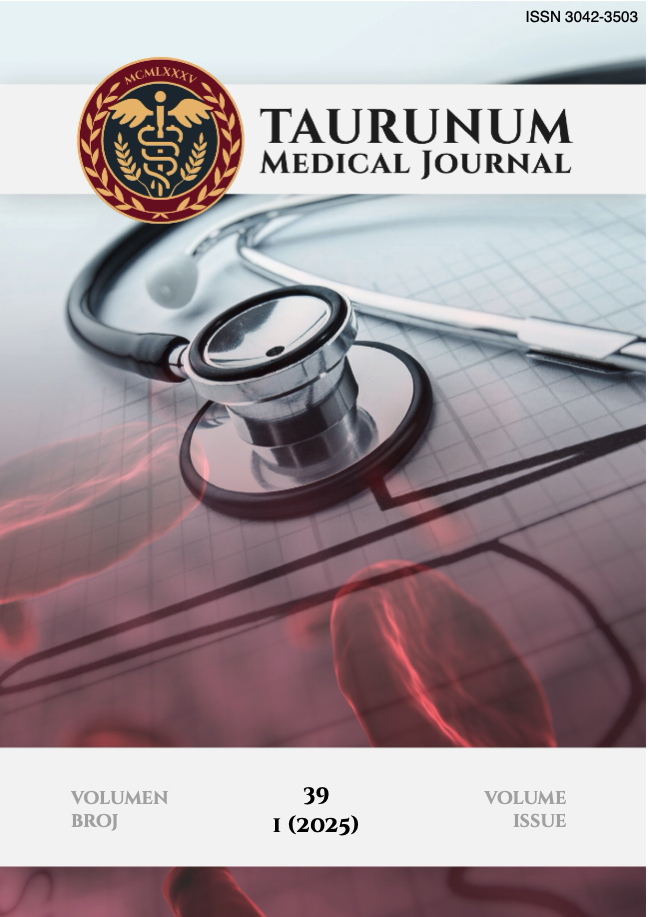
More articles from Volume 39, Issue 1, 2025
Severe Dyspnea Caused by a Massive Neck Mass - Report of a Case
Epidemiological characteristics of Covid19 positive patients in triage centre CHC Zemun
Massive Sinonasal Polyposis in an Elderly Patient: Report of a Case
The Importance of Intraoperative Exploration and Intensive Postoperative Monitoring in the Detection and Management of Synchronous and Metachronous Colorectal Tumors
Cervicogenic headache
Article views
Challenges in the Diagnosis and Treatment of Small Bowel Bleeding: The Role of Predictive Scores in Clinical Decision-Making
Department of Surgery, Clinical Hospital Center Zemun , Belgrade , Serbia
Department of Surgery, Clinical Hospital Center Zemun , Belgrade , Serbia
Faculty of Medicine, University of Belgrade , Belgrade , Serbia
Department of Surgery, Clinical Hospital Center Zemun , Belgrade , Serbia
Faculty of Medicine, University of Belgrade , Belgrade , Serbia
Department of Surgery, Clinical Hospital Center Zemun , Belgrade , Serbia
Faculty of Medicine, University of Belgrade , Belgrade , Serbia
Department of Surgery, Clinical Hospital Center Zemun , Belgrade , Serbia
Faculty of Medicine, University of Belgrade , Belgrade , Serbia
Department of Surgery, Clinical Hospital Center Zemun , Belgrade , Serbia
Oncology Hospital, Clinical Hospital Center Zemun , Belgrade , Serbia
Oncology Hospital, Clinical Hospital Center Zemun , Belgrade , Serbia
Abstract
Introduction: Gastrointestinal bleeding represents a serious clinical challenge due to the complexity of diagnosis and the therapeutic options required for effective management. Small bowel bleeding, although relatively rare, poses a significant diagnostic dilemma due to the difficulty in identifying the source and the variability of causes, which differ depending on the patient's age. In the elderly population, vascular malformations are the most common causes, whereas in younger patients, the etiology can be broader, including inflammatory diseases, tumors, and congenital abnormalities. The aim of this study was to investigate the clinical characteristics and outcomes of patients with hemodynamic instability due to small bowel bleeding, with a particular focus on the application of predictive scores (GBS and CRS). Materials and Methods: This retrospective observational study, conducted from January 2023 to January 2024, included 24 hemodynamically unstable patients with diagnosed small bowel bleeding. All patients were assessed using the Glasgow Blatchford Score (GBS) and Clinical Rockall Score (CRS) to evaluate risk and predict clinical outcomes. Demographic data, clinical and diagnostic information were analyzed, with comparative analyses of preoperative, intraoperative, and histopathological findings. Results: The mean age of the patients was 69.8 years, and 79.2% presented with hematochezia. All patients had GBS > 15 and CRS > 6. Conservative treatment was effective in 62.5% of patients, while 37.5% required surgical intervention. The mortality rate was 12.5%. Statistically significant positive correlations were found between GBS and mortality (r = +0.76, p < 0.05) and between GBS and surgical intervention (r = +0.32, p < 0.05). The most common causes of bleeding were vascular lesions, although the source of bleeding was unidentified in 11 patients. Conclusion: Small bowel bleeding remains a major challenge for clinicians, requiring a multidisciplinary approach to diagnosis and treatment. The use of predictive scores such as GBS and CRS aids in assessing severity, guiding decision-making, and planning further treatment.
Keywords
Citation
Copyright
This is an open access article distributed under the Creative Commons Attribution License which permits unrestricted use, distribution, and reproduction in any medium, provided the original work is properly cited.
Article metrics
The statements, opinions and data contained in the journal are solely those of the individual authors and contributors and not of the publisher and the editor(s). We stay neutral with regard to jurisdictional claims in published maps and institutional affiliations.




